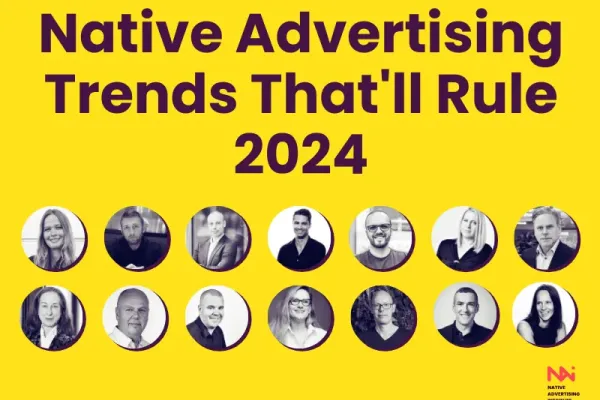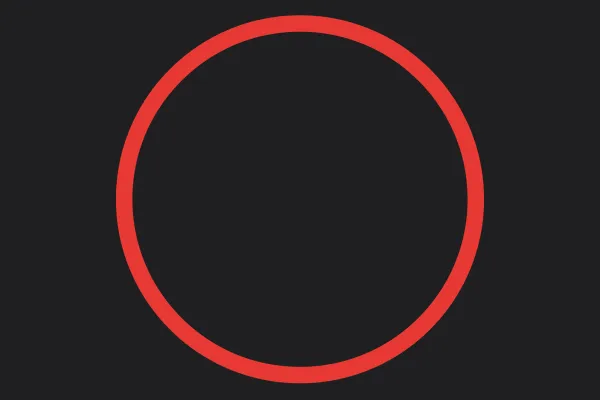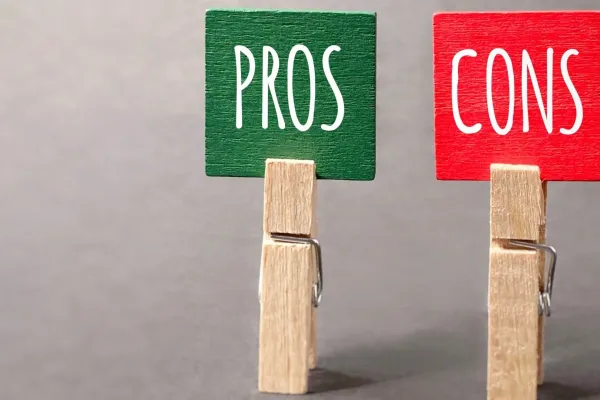
 Details
Details
Once hailed as the shiny new thing in the advertising world, native advertising has now become an established strategy for businesses to promote their products and services in a more organic and non-intrusive way.
By matching the form, feel and function of the content surrounding them, native ads provide a more positive and engaging user experience that is less likely to be ignored or blocked.
Because they are less disruptive to the audience, native ads outperform traditional forms of advertising. A 2015 eye-tracking study by Sharethrough found that consumers looked at native ads 53 percent more frequently than native ads and spent nearly as much time looking at native content as the surrounding editorial content. But native ads don’t just attract eyeballs, they drive results. The same study found that native ads delivered an 18 percent higher purchase intent than banner ads.
But with so many different types, or formats, of native advertising available, it can be difficult to know which route to take. In this article, we'll explore the different types of native advertising and help you develop your own native advertising strategy.
READ MORE: What Is Native Advertising? Our Complete Introductory Guide to Native Ads
Types & Formats of Native Advertising in 2025
In the second version of its much-cited Native Advertising Playbook, released in 2019, the Interactive Advertising Board (IAB) identifies three core types, or formats, of native advertising:
- In-Feed/In-Content
- Content Recommendation Ads
- Branded/Native Content
Given the speed at which the native advertising industry grows and develops, four years is akin to a lifetime. We’d wager that an updated version of IAB’s playbook will see the light of day soon. Until then we will stick to these core types and formats of native advertising, adding some helpful information about several subtypes along the way.
Each type of native advertising has its own unique format and purpose, and its own advantages and disadvantages.
READ MORE: The Best Native Advertising Examples You Can Use as Inspiration
What Are In-Feed/In-Content Native Ads?
The only real distinction between in-feed native ads and in-content native ads is where they are placed. There is no difference in the format between the two types of native ads.
In-feed native ads appear within the regular content of a website or app. Users encounter these ads in their news feeds or social media feeds, hence the name. These ads blend in with the surrounding content and are often labelled as "sponsored" or "promoted." In-feed ads can be either static images or videos and typically include a call-to-action button.
In-content native ads are placed within a single piece of content like a news article. The ad could be inserted between paragraphs or at the conclusion of the article. Just like in-feed ads, it mimics the look of its surroundings.

Sponsored posts on Facebook are a great example of in-feed ads. Platforms like Nativo also offer publishers and brands a variety of ways to deliver in-feed content in the form of native articles, videos and display ads.
Many in-feed and in-content native ads are delivered programmatically, meaning that they are placed through a real-time bidding process that goes on behind the scenes.
IAB’s original Native Advertising Playbook, published back in 2013, included the type “In-ad with native element units”. This rather unwieldy name referred to a type of native advertising that combines the eye-catching appeal of traditional banner ads with native elements like product reviews, user-generated content, or real-time weather forecasts. IAB reasoned that these native elements weren’t enough to distinguish these types of units from traditional banner ads.
→ RELATED ARTICLE:
How to drive results with sponsored posts on Facebook
What Are Content Recommendation (Native) Ads?
The first thing that probably pops into your head when you hear “content recommendation ads” are those widgets that typically appear at the bottom of news articles or content pages and provide users with a list of related articles or products. Typically labelled as "recommended", "sponsored" or “you may also be interested in”, these are designed to match the look and feel of the website’s regular content.
Content recommendation widgets can help brands promote their own content or products in a way that feels natural. Consumers respond to them more favourably than traditional ads because they suggest other content the user may be interested in.
Popular native advertising recommendation widgets include Outbrain, Taboola, Dianomi and Revcontent.
You will also often hear these types of ads referred to as content discovery ads and/or sponsored content ads. Clicking on this type of native ad will always send the user to an external site

→ RELATED ARTICLE:
The top native ad networks for scaling your business
What Is Branded/Native Content?
IAB defines this primary category as “paid content from a brand that is published in the same format as full editorial on a publisher’s site, generally in conjunction with the publisher's content teams themselves.”
That’s a pretty broad definition, which probably explains why this category is sometimes also referred to as sponsored content and partner content. Some also refer to it as publisher-partnered content, which makes sense given this type of native advertising is built upon the relationship between a brand and a publisher.
Many times the content, whether it’s a written article or a video, will be produced by the publisher. Some leading publishers, including the New York Times, Buzzfeed, Fortune and Washington Post, to name just a few, have their own in-house studios that produce native content with a journalistic angle.
→ RELATED ARTICLE:
The New York Times makes some of the best native advertising. Here's why.
This helps to ensure that the native content will meet the publisher’s own expectations and those of its loyal audience. The brand will of course be given the final sign-off on the content, but the publisher takes the lead in both creation and delivery.
When it’s done right, native content can be just as engaging and informative to audiences as the publisher’s regular content. When it goes wrong, however, it can backfire on both the brand and the publisher.
These types of articles and videos feel natural in their editorial setting but should always clearly be labelled as sponsored or partner content.
Sometimes brands and publishers will enter into a partnership that goes much deeper than a one-off article here and there. Forbes’ groundbreaking native advertising model BrandVoice is a great example of this.
With BrandVoice, brands are given a subsite to publish their own content and put it in front of Forbes’ sizable and influential audience. First launched with SAP some 12 years ago, Forbes has had over 500 BrandVoice advertisers.
→ RELATED ARTICLE:
8 Essential Visual Techniques for Native Advertising
Wait, what about paid search and promoted listings?
The native advertising industry has been a bit at odds with itself over whether paid search ads and promoted listings qualify as native. IAB removed paid search ads and promoted listings as core types of native in its update playbook but argues that they could be considered types of In-Feed/In-Content ads.
At the Native Advertising Institute, we think of paid search ads and promoted listings as their own thing. While they do indeed match the look and feel of what surrounds them, we don’t believe that paid search ads and promoted listings qualify as content per se. At least not the type of quality content that sets native advertising apart from more traditional ads.v
That said, we think they’re worth briefly running through here.
Are Paid Search Ads Native Advertising?
You have undoubtedly encountered paid search ads before. These are the ads that appear at the top of the results pages of search engines like Google and Bing. They are designed to look just like organic search results but are typically labelled as "sponsored" or "ad". Paid search ads can be a great way to target users who are actively searching for products or services related to your business.
However, studies have shown that most consumers are more likely to click on organic results than paid search ads. Does this mean that paid search ads have also fallen victim to ad blindness? Unlikely.
Search advertising revenue at both Google and Microsoft are on the rise, and you can bet that the tech giants would not be bringing home bank from paid search if people weren’t clicking on the ads.
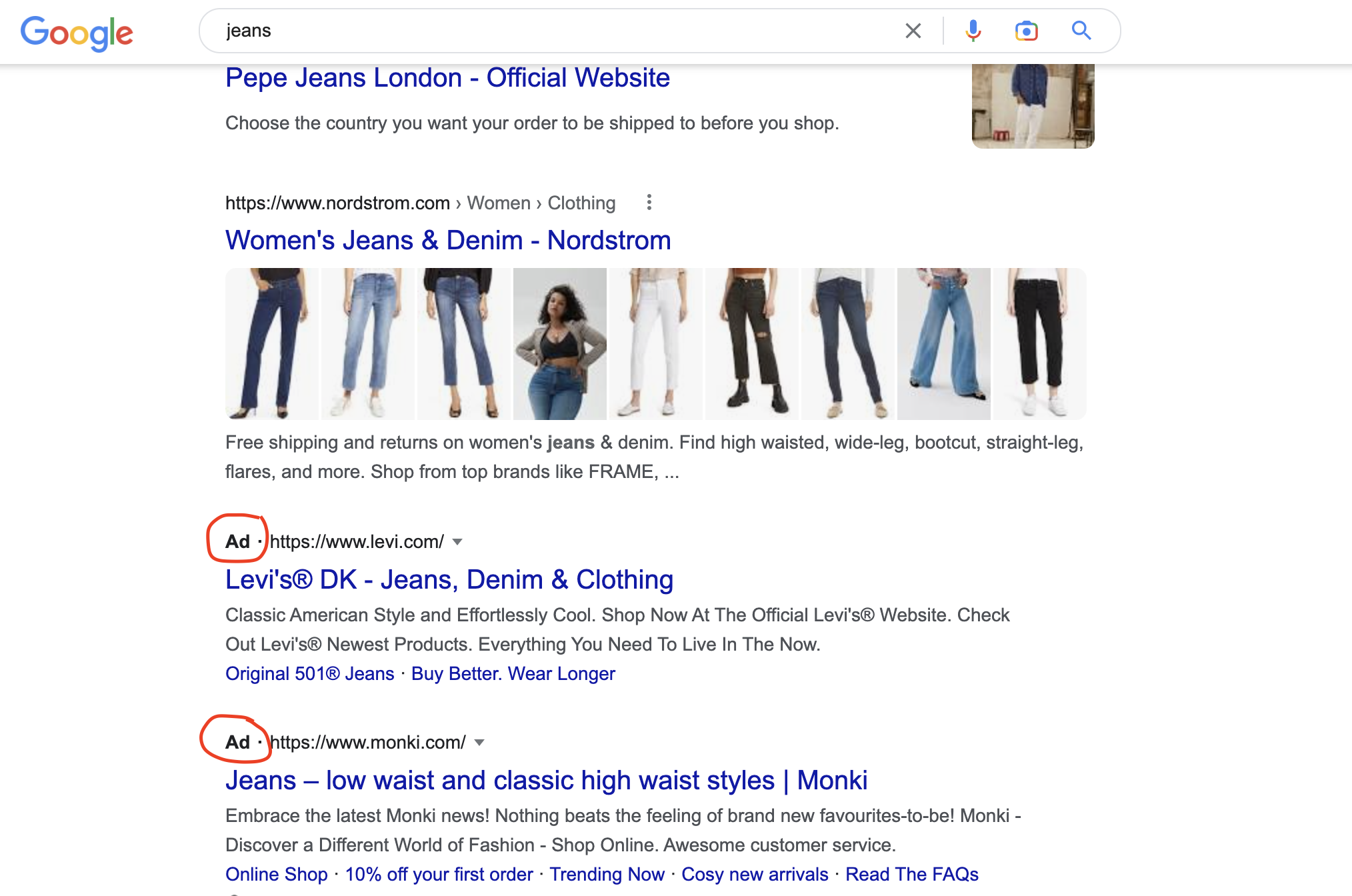
Are Promoted Listings Native Advertising?
Promoted listings are tricky to define and many do consider them to be a type, or format, of native advertising in 2025.
Promoted listings are similar to paid search ads but rather than appearing in search engine results, promoted listings show up on e-commerce sites like Amazon or eBay. They are designed to blend in with the look and feel of the site and are typically labelled as "sponsored."
Promoted listings can be a great way to increase visibility and sales for a particular product. According to eBay, promoted listings get 36% more impressions than organic listings. The online marketplace says that when shoe giant Reebok used promoted listings, it saw a 142% sales increase.
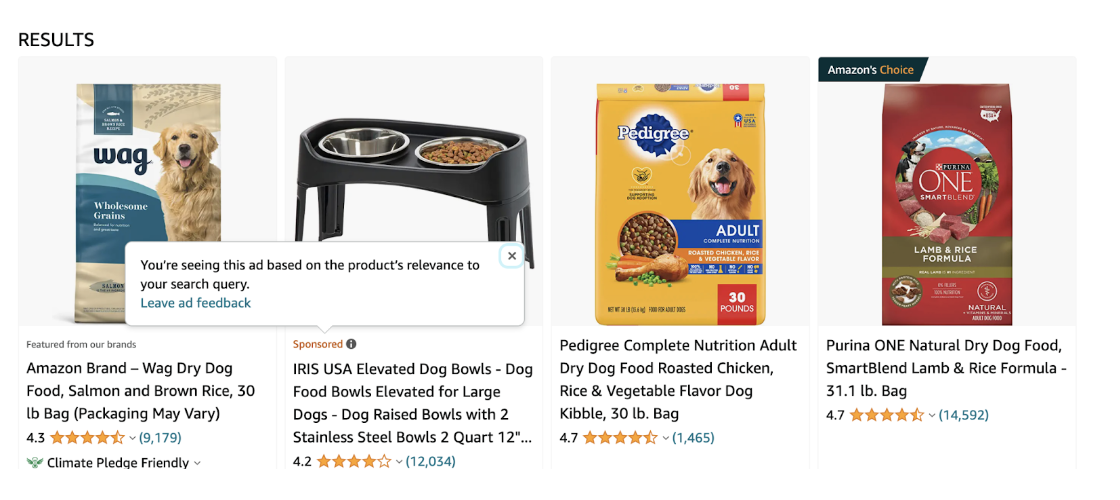
Wrapping up
With the right approach, native advertising can be a powerful tool for increasing brand awareness, engagement, and conversions. By understanding the different types and formats of native advertising, brands can create a strategy that provides value to their intended audience while also promoting their products or services.
Whether a brand chooses in-feed ads, programmatic recommendation ads or branded long-form content, it’s important to ensure that the advertising informs and engages the intended audience rather than annoy them.
For publishers, the less intrusive and more engaging nature of native advertising leads to higher click-through rates than traditional ads and thus more revenue. The types of native ads described in this article also create a better user experience for audiences.

